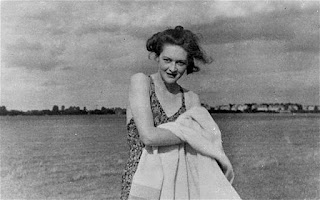Operation Mincemeat - The women behind the plot to fool Hitler
EPISODE LINK: “The Ladies Behind The Plot That Tricked Hitler”
I am working in editing our latest episode. Lisa and I recorded about the women of “Operation Mincemeat”, an elaborate Allied plot during WW2 designed to fool Hitler into shifting his troops. There were a few main women key to this story. This is one…
Jean Leslie: The Woman Behind the Deception That Fooled Hitler
In the vast web of World War II espionage, Operation Mincemeat stands out as one of the boldest and strangest deceptions ever executed. At its heart was a fabricated identity, a corpse dressed as a British officer, floating ashore with “top secret” documents. But behind this audacious ruse stood an unexpected heroine: Jean Leslie, a young British secretary whose photograph would become the linchpin in a global bluff.
Jean Leslie was just 19 years old when she joined MI5, Britain’s domestic counter-intelligence agency. Intelligent and composed, she was assigned to clerical and administrative duties—crucial work often overshadowed by the more glamorous image of spies in the field. But it was her contribution to Operation Mincemeat that would etch her name quietly but firmly into the annals of history.
The mission required crafting a believable identity for a fictional Royal Marine, “Major William Martin.” To make his persona convincing, he needed personal touches: a love letter, receipts, keys—and a girlfriend. That’s where Jean Leslie came in. Her photo, a glamorous portrait in a swimsuit, was tucked into Martin’s wallet, labeled “Pam,” his beloved fiancée. Jean also helped pen the love letters “Pam” wrote to her imaginary major, filled with longing and everyday affection.
The ruse worked. The body washed ashore in Spain in 1943, and the planted documents were passed to Nazi intelligence. Convinced by the personal
details—including “Pam’s” photo—the Germans were duped into believing the Allies would invade Greece instead of Sicily. The real invasion caught them off guard, saving thousands of Allied lives and shifting the momentum of the war.Jean Leslie’s role was small on the surface but crucial to the operation’s success. Her participation reflects a larger truth often missed in war stories: women were not just behind typewriters or in the background—they were key players in intelligence, strategy, and deception.
Jean kept her involvement secret for decades, in keeping with wartime confidentiality. But in her later years, she spoke about it with modesty, still somewhat surprised at the role her photograph played in changing the course of the war.
Her story reminds us that history is often shaped not only by generals and battles but also by a clever photograph, a forged letter, and a young woman’s quiet courage.

